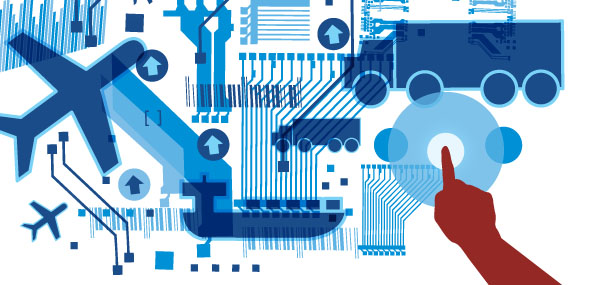How to Benefit from SaaS TMS

Emerging technology platforms are accelerating the maturation of transportation and logistics solutions, particularly those that enrich and empower the user community by integrating partners and aggregating data. The Software-as-a-Service (SaaS) transportation management system (TMS) is a prime example.
SaaS TMS is a single-instance, multi-tenant environment where customers and their partners access a shared solution via the Internet. Transportation feature functionality is comparable to other hosted or on-premise solutions. What makes SaaS unique, however, are the intangible benefits that exist by being part of a community as opposed to simply working siloed within the four walls of an organization.
Once a carrier is in the network, it is connected to all appropriate partners. With hosted or on-premise applications, the carrier has to integrate with each user separately. This intuitive connectivity creates competitive advantage in a number of ways:
Cost Structure. SaaS is sold as a service, not a product, which increases and accelerates a user’s return on investment as it moves from implementation to integration and finally optimization. There are no costly upgrades.
Scalability. In transportation management, scalability can be as simple as having immediate access to additional carriers already in the network. SaaS allows users to more easily flex to demand; onboard new customers, carriers, and suppliers; or add and upgrade services on demand.
Accessibility. With more partners integrated on a single platform and more data streaming across the network, individual users benefit by having access to more robust and accurate information. Reporting and benchmarking performance data provides business intelligence that can be shared among all users in the network to create additional value.
Visibility. Because partners are all in the same environment, visibility is that much greater. Real-time communication is enhanced. Every party knows what is happening, when, and why. And visibility extends to data that enables more accurate and robust performance metrics.
Collaboration. With greater visibility, businesses can share information faster and more efficiently. Vendors, carriers, and shippers can collaborate to work across each other’s networks, sharing transportation assets and creating economies of scale.
Shippers can leverage SaaS TMS to unleash rapid and significant change throughout the organization. For example, consider a retailer that is managing inbound transportation, but has problems with visibility and wants to reduce inventory and increase supply chain flow without expanding facilities.
By bringing carriers and vendors onboard a SaaS TMS platform, the retailer can track shipments in the supply chain. With greater visibility to demand and supply, it can reduce safety stock. Inventory reduction, in turn, increases supply chain velocity and throughput—all of which reduce warehousing and transportation costs. That’s the power of SaaS.
SaaS Stands Out
With so many different technology platforms and hybrid variations on the market, it is important for shippers to know what makes SaaS unique from other deployment models.
SaaS: The technology runs on a platform and the customer accesses it via the "cloud." SaaS supports a multi-tenant network that allows multiple business partners to integrate on the same platform.
Hosted: Technology is accessed on demand, much like SaaS, but does not have a multi-tenant architecture, therefore requiring separate implementations for each user, and integrations for each carrier.
On-premise: Technology is installed and runs on the customer’s hardware, requiring administrative resources and additional cost for databases and infrastructure.
